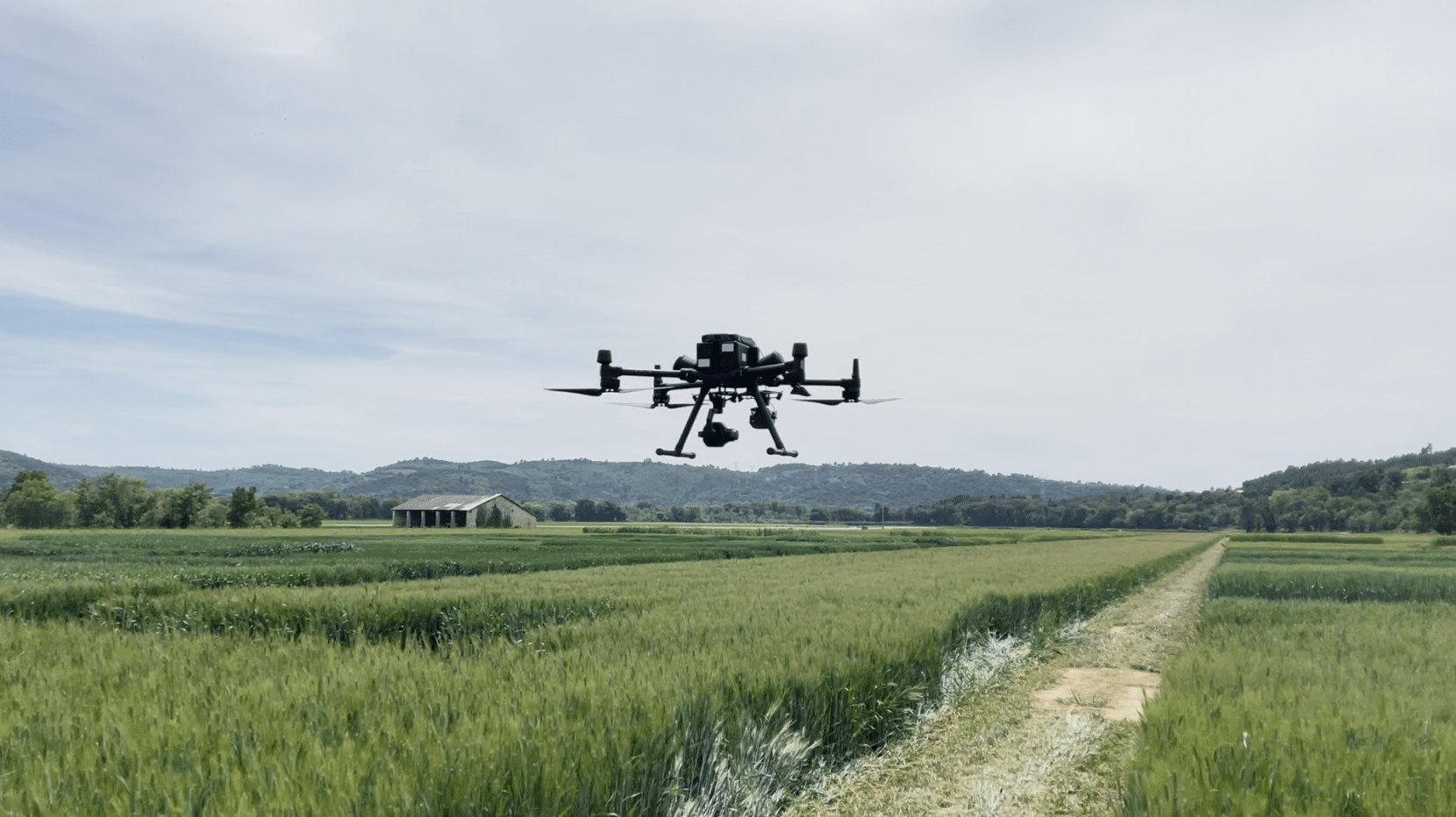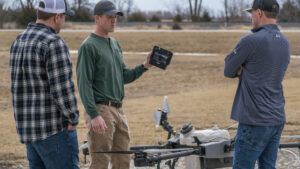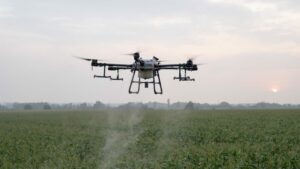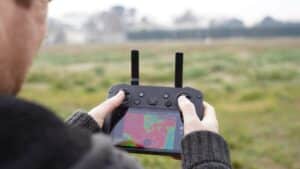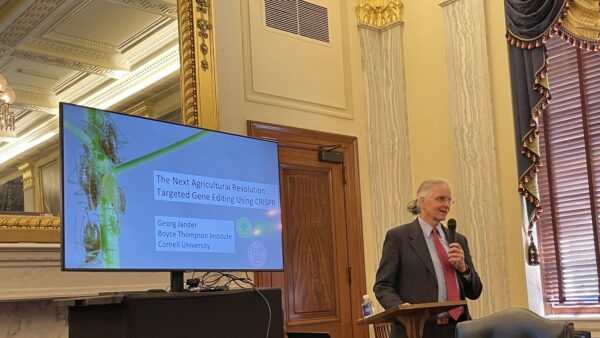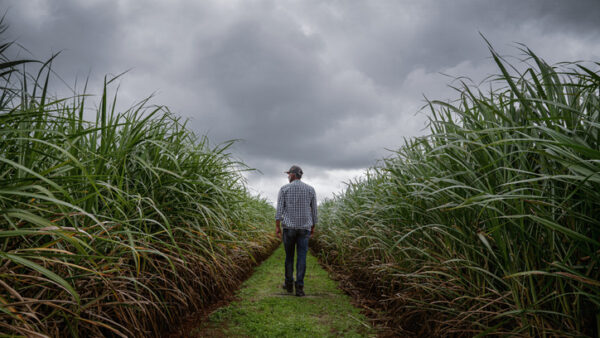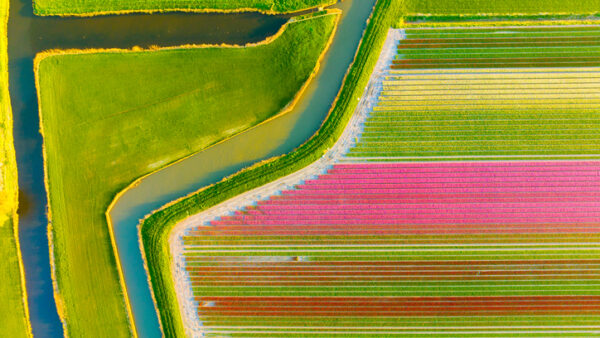Drones are changing the face of breeding programs across the globe. In the next several issues, I will describe the key components of drone programs from image acquisition to trait extraction to putting the new data to work. In the issue, I will frame how global security issues are intersecting with drone usage to create challenges to acquire research grade imagery with drones.
In recent years, the utilization of drones has become integral to crop breeders. China-based DJI (Dà-Jiāng Innovations) has been a dominant player in providing high-quality drone technology.DJI’s technological advances have directly supported the proliferation of high throughput phenotyping tracks. However, the American Security Drone Act of 2023 (S.473) looks to ban all federal agencies and contractors from procuring or operating drones “manufactured or assembled by foreign entities that pose national security risks”. Though the bill, which was first introduced in 2020, has not passed, it has spawned blanket bans and restrictions on DJI products in all federal departments as well as some states, universities and institutions. These bans have raised concerns about access to drone technology for many important applications including plant breeding.
DJI’s Role in Crop Breeding
DJI’s drones have been widely adopted in agriculture for their ability to collect valuable data through advanced imaging technologies. Plant breeders leverage drone technology to acquire research grade image sets from which key metrics like stand counts, vegetative indices, plant height and wheat head counts can be extracted. These raw traits can then be leveraged to determine factors like maturity and yield before harvest (we’ll talk more about this in the next installment of this series). These applications contribute significantly to the development of new plant varieties, enhancing crop yield, resilience and overall agricultural sustainability.
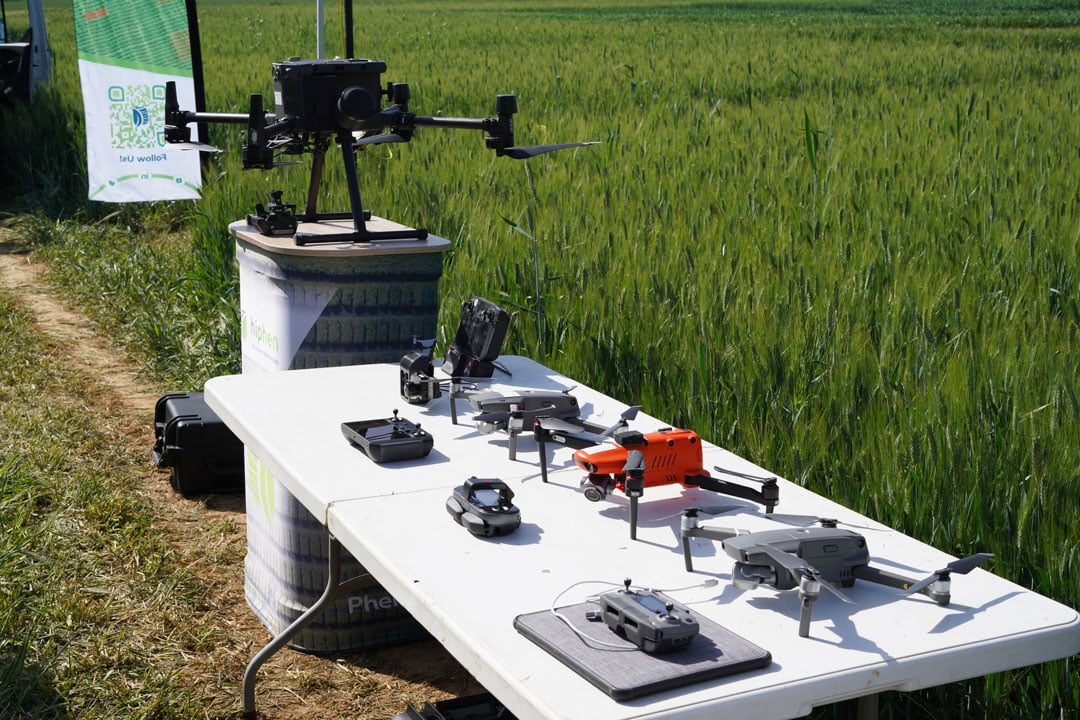
Drone Dilemma for Breeders
The imposition of bans on DJI products has left plant breeders in a challenging position, as they must now seek alternative solutions for data collection and analysis. Several key challenges have emerged in this landscape according to Hiphen CEO Alexis Comar:
- Limited Options for Research Grade Imagery: DJI drones are renowned for their integrated sensors and controls which are seamless to operate and provide plant breeders with accurate and detailed imagery crucial for their research. The ban forces plant breeders to explore alternative drone options that may not offer the same level of quality and ease of use, potentially compromising the accuracy of data collected.
- Integration Issues: Plant breeders who have invested in DJI products may face integration challenges when transitioning to alternative drone technologies. Comar notes, “Most of the alternatives currently available do not have fully integrated controls and must be mounted with third party hardware and software.”
- Financial Implications: The need to replace or upgrade existing equipment to comply with new regulations or restrictions can strain research budgets, limiting the resources available for critical breeding programs.
- Loss of Advanced Features: DJI drones often come equipped with advanced features such as real-time mapping, thermal imaging, and artificial intelligence capabilities. Plant breeders may lose access to these sophisticated tools, hindering their ability to make informed decisions and advancements in crop development.
Adapting to Change
While the DJI ban poses challenges, it also presents an opportunity for plant breeders to explore alternative technologies and strategies. Hiphen CTO Joss Gilet notes, “Plant breeders can investigate non-drone technologies, such as satellite imagery, tractor mounted sensor arrays, and even handheld sensor systems to supplement or replace drone-based data collection. We have been developing all of these solutions for years and a drone ban may accelerate adoption of these and other alternatives to drones for high throughput phenotyping. Integrating a diverse range of technologies can enhance the robustness of data sets and provide a holistic view of variety performance.”
Drones still have capabilities none of the alternative imaging vectors can match. Luckily, some drones — those included on the NDAA (National Defense Authorization Act)’s BLUE UAS Cleared List — are considered compliant and acceptable. Anyone subject to the bans can confidently procure and use any drone on NDAA’s list. Cody Thomas from Advexture notes that American manufacturers like Vision Aerial, Exo, Inspired Flight, Skydio and others are filling the gap technically even if the cost-to-quality gap is still quite large,
What’s Ahead
The DJI ban has undoubtedly disrupted the workflow of plant breeders, posing challenges that require adaptability and resilience. Many researchers are hoping for some agricultural exemptions from the ban. However, the DJI ban plays out, technology developers are working to fill the gap. Hiphen stays in close contact with key drone suppliers like Advexture to maintain up-to-date information on the latest regulations, drones and sensors that can improve breeder’s programs. We are always open to discussing your drone or other phenotyping needs.


